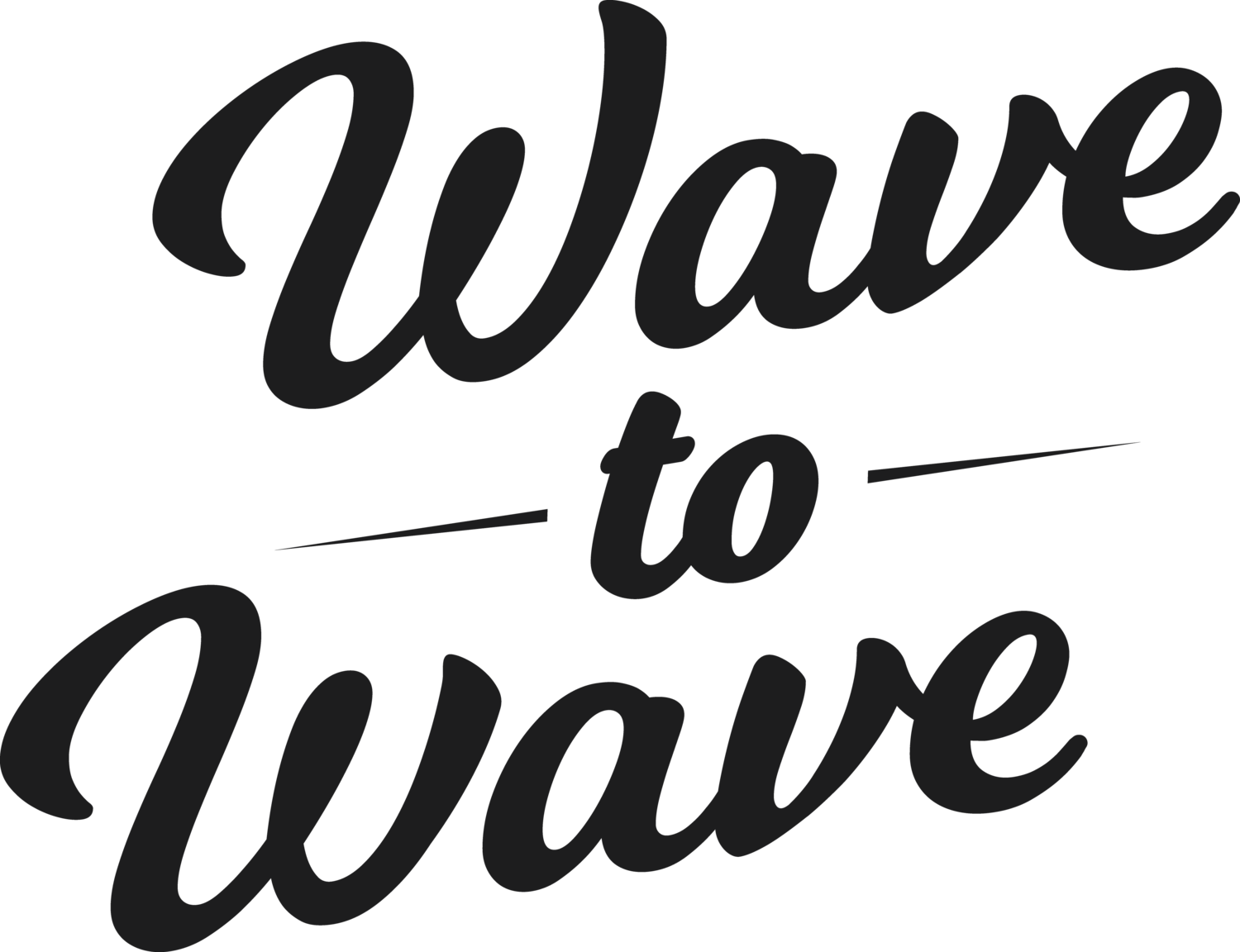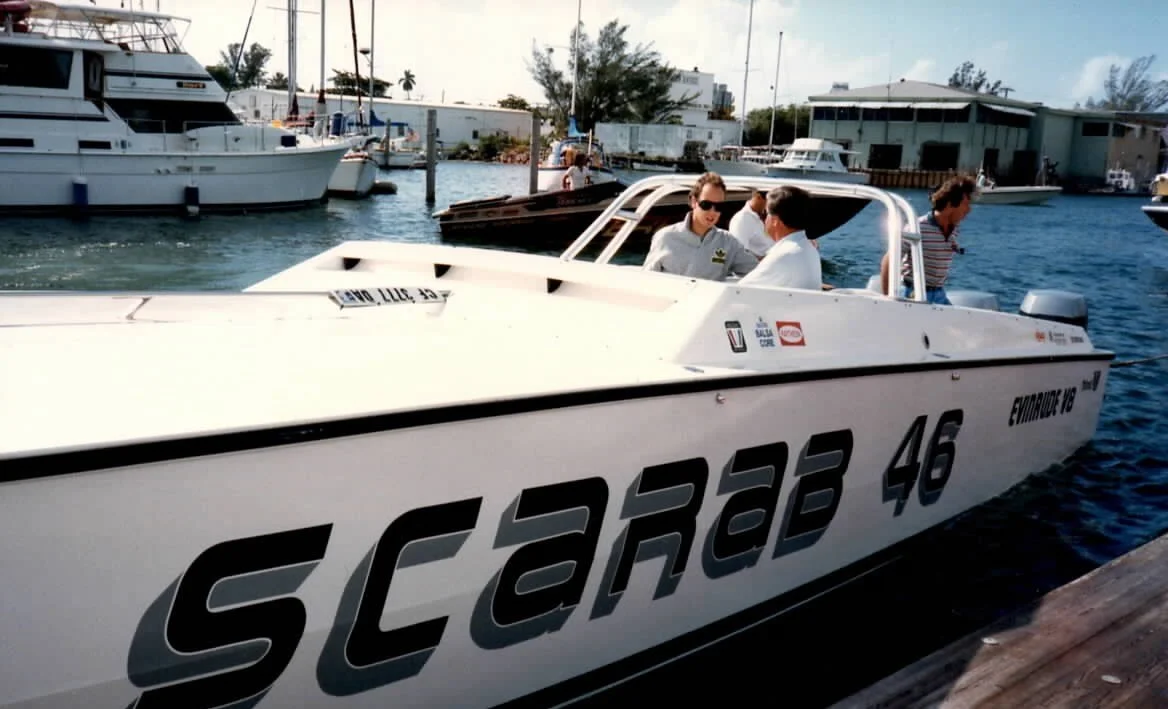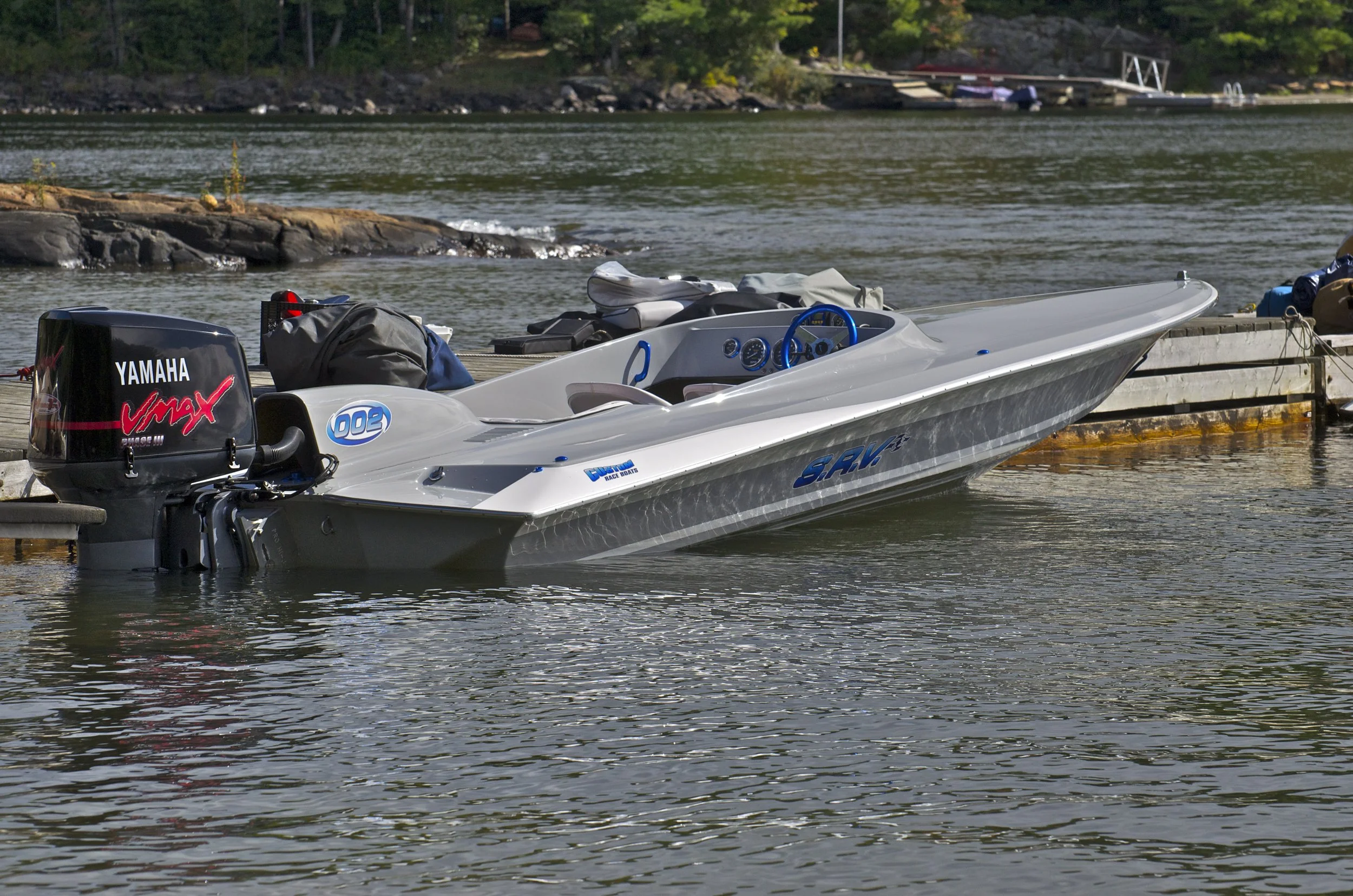10 Questions with Larry Smith
When it comes to early offshore powerboat racing the industry had its fair share of colorful characters but when you talk about design and innovation you have to mention Larry Smith from Team Scarab. The designer and boat building icon from California really changed the industry when it came to new materials like Kevlar and lamination techniques like vacuum bagging before they became popular. From a design perspective, Smith incorporated hull tuning like putting slight rockers in the hull and stepped keel pads for lift and later ventilated transverse stepped bottoms for improved speed which are now very common. Scarabs were often a little lighter and a little faster in the early days which translated into wins in racing. Success in racing led to success with consumer boats and a deal with the one of the largest boat manufacturers of the time. Larry emerged as one of the most recognizable names in boating and made an incredible impact on the industry. Here are ten questions with Larry Smith.
Can you recall a particular time when you realized that boat building and boat design was going to be your calling?
I got involved in diving, underwater photography and spear fishing in the 1950’s. Graduated from college with a engineering degree from USC, and was commissioned as a officer in the US Navy. I also became became a licensed general contractor with contracts at AeroJet Generals rocket engine plant in Homestead FL. In the 1960’s one of my friends, Ronnie Burns, started racing offshore boats in Florida and another friend, Bruce Kessler, started racing cars. In 1965 I formed a corporation with another friend Peter Rothschild to develop an offshore race team. We bought a 23’ Formula hull from Bill Wishnick and re powered it with a 700+ HP supercharged Holman Moody Ford engine developed, by Chuck Daigh. We won the US Offshore national title in 1966 with Chuck as the third man in our crew. Chuck was the driver of Lance Reventlows Scarab race car, winning the 1960 United States Grand Prix. Racing in the late 60’s with Dick Bertram, Don Aronow, Bob Nordskog, Bill Cooper, Odell Lewis, Jim Wynn and Bill Wishnick instilled a desire to build a larger, faster and stronger offshore powerboats, which lead to starting Team Scarab in late 1974 as a full time business.
In the early days of racing and even now, women were not very active in offshore racing, can you talk about the women you worked with in racing and the impact of Betty Cook and KAAMA Marine?
Before Betty Cook won the 1977 APBA Offshore Championship and the 1978 World Offshore Championship in her KAAMA 38 Scarab, we had an all woman team of Kim Young and Patsy Miller, who won the 1976 APBA Production 2 Offshore Championship, in a 9 meter Scarab. I believe Betty Cook was the first woman to win a World Championship in a motorized event! Before this we had raced against Gail Jacoby and her mother in some Florida races and the Bahamas 500.
Larry Smith with Betty Cook. Two legends of the sport.
What influenced and shaped your design philosophy for Scarab?
I started racing in the 1960’s and was lucky to get to know English Naval Architects Sonny Levi and Don Shead along with Dick Bertram (who built and developed Raymond Hunt’s early deep V designs) and also very clever, Fabio Buzzi in the middle 70’s.
I studied books on early high performance marine design by Uffa Fox (Seamanlike Sense in Powercraft 1968), Peter Du Cane (High Speed Watercraft 1973), Sonny Levi ( Dhows to Deltas 1971), Harald Fock (Fast Fighting Boats 1978) and Dag Pike (Power Boats in Rough Seas 1974). I also took a Westlawn course in Naval Arch but found little applicable to high speed offshore.
This is an incredible print by my friend Jeff Rohlfing of the Betty Cook 38’ KAAMA Scarab
How did you learn about new materials like Kevlar and different building techniques and how much experimenting did you do?
With a engineering and construction background, as well as a pilots license, I was attracted to light weight materials. Dupont had developed a new fabric for composite laminations and had introduced it in a kayak in the 1974 Olympics. I worked with DuPont in developing it for offshore powerboats and along with Fabio Buzzi in Europe, started meeting with boat builders to showcase the new material. This material when combined with epoxy resins gave our 38 Scarab about 1,000 Lbs of weight advantage over a 36’ Cigarette race boat. I worked with Sammy James at Bertram Yachts and they used Kevlar 49 in their 38’ race boats.
A very rare 46’ Scarab powered by triple Evinrude V8s. 1985, with Prince Albert taking the wheel.
Do you have a boat now that you have for personal use? If no, what's your favorite boat on the market presently?
We keep our 17 Kona jet boat at my partner, Mac Spencer home on Sarasota Bay. In Santa Barbara I have a 4-5 passenger solar electric powered 14.5’ inflatable triple hulled platform boat. We are currently working on foils, for it to plane with no wake while running on stored sunshine! Not an easy project, but breaks up the isolation bubble from the pandemic. My daughter and husband have a Michael Peters designed 28’ Chris Craft in Greenwich CT, I think its good boat for family performance with great styling!
When you think back to the seventies and eighties, in hindsight, what were the biggest breakthroughs in design and technology that had the biggest impact? (Engines, drives, materials; anything)
We won the US Offshore Championship in 1966 by racing a Holman Moody engine that was more HP than the competition and was still reliable. We won the US and World Offshore Championships in the late 70’s and 80’s by having lighter boats and racers like Betty Cook, Tom Gentry, Bob Nordskog, Joey Ippolito, Nigel Hook and Bruce Penhall, with the best throttle man like Ritchie Powers, Bobby Moore, Harold Smith and Jon Connors. We won many races in the early 80’s, because we were the first company to develop stepped offshore race boats that gave us a 10% performance over the constant dead rise hulls our competition were using.
As a follow-up, what do you see as the next breakthrough in boating ie. what will boats look like in 20 years?
We are currently interested in foils, but not for high speed applications and we have been working on solar electric propulsion since 1980. I believe that form does follow function and it distresses me to see some of the functionless designs that crop up around the world from small jet boats to mega yachts. I am more concerned with efficient bottom design and aerodynamic top sides. It seems to me we have to focus on building affordable boats! The 45'-50’+ boats with 12'-15' beams and powered by 5 OB’s are extreme for most of the country. It seems a stepped 37’ trailerable twin OB with a 80 mph top speed could fill a large void in the performance niche and we may introduce one next year thru Kona Concepts LLC.
Larry’s personal favorite, stepped 48 Scarab, powered by twin 550 HP B series Cummins diesels / Surface Drives. The boat has an 80 mph top speed and established a record from San Francisco to Long Beach in the first Lucas Oil Offshore Cup in Oct 2013
What worked and didn't work about the Wellcraft / Scarab relationship?
My 28 year licensing agreement with Wellcraft Marine worked great for both of us! Starting in 1976, with Dick Genth president and Castle Jordan owner of the parent company, Aegis Corp, we had an agreement where Team Scarab Inc would develope and build performance boats and Wellcraft Marine would design tooling and produce boats for the recreational market under license. We would also promote the our designs thru a race program as well as promotional special events and military applications. Most of the success of the Scarab recreational boat was due to Bob Long, President of Wellcraft Marine, Bill Erickson, VP Sales, Gus Anastasi, VP Manufacturing and Gordon Hauser, VP Marketing. All were avid boaters and well respected in the marine industry. When Bob Long left Wellcraft Marine, Irwin Jacobs replaced him with a series of presidents most of which did not have boating backgrounds. Wellcraft Marine produced more than 30 different Scarab models during our 28 year relationship.
Early on, did you have a mentor or colleague that was instrumental in your career?
The success that Team Scarab Inc enjoyed is mostly because of Warren Robbins, who ran our development and manufacturing for over 20 years. Warren was also responsible for the PJX water jet we licensed to Volvo as well as original development of The 17’ Kona sport jet and Sport RIB, now in pre production by Kona Concepts LLC. Michael Reagan lead the way with offshore endurance runs that promoted the SCARAB offshore race boats in 1983 and 1984, along with Don Johnson, Chuck Norris and Walter Payton.
The end of the endurance run from San Francisco to Marina Del Ray in 1988. Chuck Norris on the far left also accomplished the Chicago endurance run. Even the ocean is afraid of Chuck Norris.
What is your favorite Scarab model of all time?
My favorite SCARAB model is the 48’ diesel powered stepped hull, that has a top speed of 80 mph with twin Cummins 550 hp B series diesels. This prototype had a pair of TriMax surface drives and integral Sea Planes designed by Fabio Buzzi. The boat was rigged by Team Archer Marine and Nigel Hook used it to establish the First Lucas Oil Ocean Cup record from San Francisco to Long Beach CA in 2003. Only one has been built for the pleasure market, with the boat licensed to Willard Marine for military patrol and interceptor applications. We hope to re introduce this model to the recreational market in 2021 thru Kona Concepts LLC.
I have to thank Larry for being so generous with his time and answers. I really appreciate it, he is a fascinating person and a great guy. All photos are from Larry Smith unless otherwise stated.
(originally published Nov. 1 2020
1988 World Championship at Key West in the 46 Scarab powered by triple Gentry race engines, Don Johnson driving.
Another endurance run, this time with Don Johnson, Gus Anastasi, and Dave Gillmore. Twin Lamborghini engines, New Orleans to St. Louise, 43 Scarab with twin 12 cyl Lamborghini engines.













